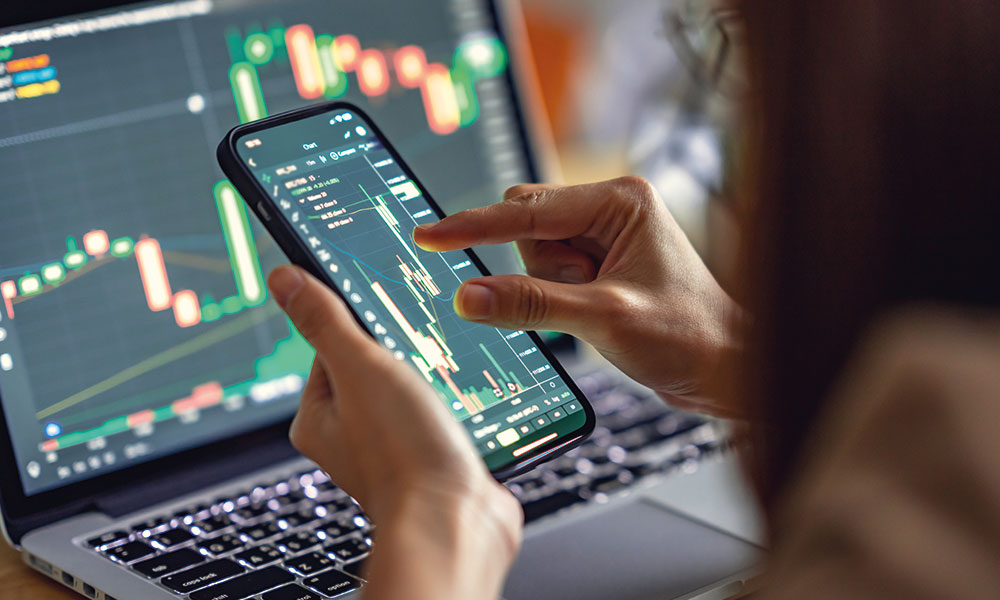
What is inflation and how does it affect OFWs?
Inflation is when the cost of what you buy goes up over time, while the value of your money goes down.
For example, while buying groceries, you notice you’ve been spending more money on the same items you bought last year. At the same time, movies, food deliveries, and clothes have become more expensive, so there have been fewer nights out than before.
If you’re an overseas Filipino worker (OFW), you’d also notice you’ve been needing to send more money to the Philippines to pay the bills; or, if inflation is happening in your host country, you’ve been needing to hustle even harder to support both yourself and your family back home.
As time passes and prices increase, you’ll get less bang for your buck than in previous months or years. And if your money can’t keep up with inflation, you would then need to consider a change in lifestyle, re-evaluating what you buy and how you spend your time.
Inflation is inevitable and sometimes desired, but that doesn’t mean you’ll always be vulnerable to it. Understanding inflation, its causes, and how to prepare for it can help you plan your finances and live the life you want.
What are the types of inflation?

The types of inflation indicate the causes behind a rise in the cost of goods and services.
These are:
- Demand-pull inflation
- Cost-push inflation
- Built-in inflation
Let’s go through each of these and how they happen.
Demand-Pull Inflation

When people want more of a good or service, but providers don’t have the capacity to meet demands, prices for that good or service go up.
According to James Chen for Investopedia, other causes behind demand-pull inflation are:
- People have a positive outlook on the economy and are willing to spend more.
- A country is exporting more goods than usual, making it more expensive to import other goods for manufacturing and selling.
- A government is spending more money, causing a rise in prices.
- Businesses are expecting future inflation and are raising their prices as a response.
- There is more money circulating in the economy than there are goods and services.
Cost-Push Inflation

Cost-push inflation occurs when prices to produce most goods and services go up. Because it is more expensive to provide a commodity and pay the people who produce or sell it, the prices consumers must pay rises as well.
One reason production costs go up is because of rising oil prices. You’ll notice that when oil becomes more expensive, the price of other goods and services also increases.
Take food delivery as a simplified example: To make rice bowls, a chef would need to transport ingredients from the suppliers to their kitchen. They would then pay delivery drivers to take the final products to the customers. Transporting ingredients, cooking, and delivering these rice bowls would require gas and petrol. If fuel prices are up, the chef would need to raise the price of their rice bowls to cover their costs.
Other factors resulting in cost-push inflation are as follows:
- Increasing costs of raw materials
- Labour issues or higher labour costs
- Natural disasters that affect materials and manufacturing
- New economic laws or policies
- Political issues
Built-In Inflation

When people predict that inflation will continue at a steady pace, they ask for more pay. As their wages rise, so does their demand, pushing up the cost of goods and services.
This cycle of wage hikes followed by price increases can go on and on if left unchecked by a country’s financial authority. Unmanaged, this phenomenon is called the wage-price spiral.
How do we manage inflation?

A country controls inflation by using a monetary policy. In the Philippines, the central bank or Bangko Sentral ng Pilipinas (BSP) enforces a monetary policy that aims for price stability, where inflation grows at a low and slow rate.
According to BSP’s official website, “By keeping the price stable, the BSP helps ensure strong and sustainable economic growth and better living standards.”
Guided by the policy, the BSP sells securities, grants, loans, adjusts interest rates, and participates in the foreign exchange market.
How do we measure inflation?

When a country’s leaders monitor inflation, they use indexes, which record the prices of certain goods and services over time.
The indexes they use are listed out below. You can also monitor these online to prepare yourself for inflation:
- Consumer Price Index (CPI) – Monitors the average retail price of basic necessities, like food, transportation, and medicine
- Wholesale Price Index (WPI) – Monitors the cost of goods before they hit retail shelves
- Producer Price Index (PPI) – Monitors how much it costs to make a good or provide a service over time
If you’re thinking ahead, you can also monitor these indices to prepare a strategy against inflation.
What is the formula for inflation?

Let’s compare the cost of a ₱150 rice bowl in Metro Manila in 2018 to the same rice bowl in 2023. To get the inflation rate, we’ll use this formula:
% Inflation rate = (Final CPI Index Value ÷ Initial CPI Value) x 100
Next, we’ll use data from the Philippine Statistics Authority’s consumer price index:
Initial CPI Index Value (January 2018) = 98.00
Final CPI Index Value (January 2023) = 125.70
% Inflation rate = (125.70 ÷ 98.00) x 100
Plugging in the values to the formula, we’ll get an inflation rate of 128.26%.
So, how much would the rice bowl cost in 2023? We’ll use this formula:
Change in Value = (Final CPI Index Value ÷ Initial CPI Value) x (Initial PHP Value) = 1.28 x 150
Thus, the cost of a ₱150 rice bowl in Metro Manila in 2023 would be ₱192.
Knowing the inflation rate and getting an idea of how much you’d spend for necessities in the next five years, means you can plan how to save and grow your money to combat inflation.
How do I protect my money from inflation?

In the cycle of life, prices inevitably go up. So it helps to have something extra saved to bulk up your savings.
You can research different techniques to prepare for inflation, but let’s start with these three strategies:
- Looking into stocks
- Owning a home
- Taking care of yourself
Read on to find out more.
Looking into stocks

When you buy stocks, you own a fraction of a company and can get a share of its earnings through dividends.
To fight inflation, you can try investing in companies that deal with raw materials or products that go into making other goods and services. For example, the prices of grain or metals go up along with inflation.
When these stocks go up, you may sell your share at a higher price or hold on to them and earn dividends.
With variable-income investments, there will be more risks. You could earn money but may also lose more money depending on the market. So do your research and consult a broker accredited by the Philippine Stock Exchange before spending.
Read more about the different types of investing for OFWs here.
Owning a home

Buying a house takes time, but you will have a place to call your own. As you pay your mortgage over the years, your home’s value will usually grow along with inflation.
And, once the property is under your name, you can choose to sell it and move to a new home or rent it out. Both choices become your additional source of income.
Did you know that when you use Kabayan Remit’s service, you can make housing and bills payments to the following corporations:
- Aboitizland Incorporated
- Crown Asia Properties
- DMCI Homes
- Filinvest Land Inc.
- Megaworld Corporation
- Robinsons Land Corporation
- SM Development Corporation
There are also numerous other types of housing and bills payments you can make with Kabayan Remit, click here for the full list.
Taking care of yourself

Higher prices mean you’ll need to earn more too. Learn new skills and hone existing ones to stay competitive when it comes to work and job opportunities.
It would be best to take care of your health so you don’t have to worry about paying the bills when prices go up.
And, most importantly, you need to keep your money safe. Be mindful of financial scams when transacting online, keep your passwords private, and always use a secure financial app when sending money back home to your loved ones in the Philippines.
Luckily, Kabayan Remit is here to help you grow your money on the go. With our user-friendly mobile app, you can:
- Instantly send money to major banks in the Philippines
- Keep your money safe thanks to our bank-level security features
- Pay your bills and investments with our partner merchants
To learn more, talk to our 24/7 bilingual customer support or click here.
